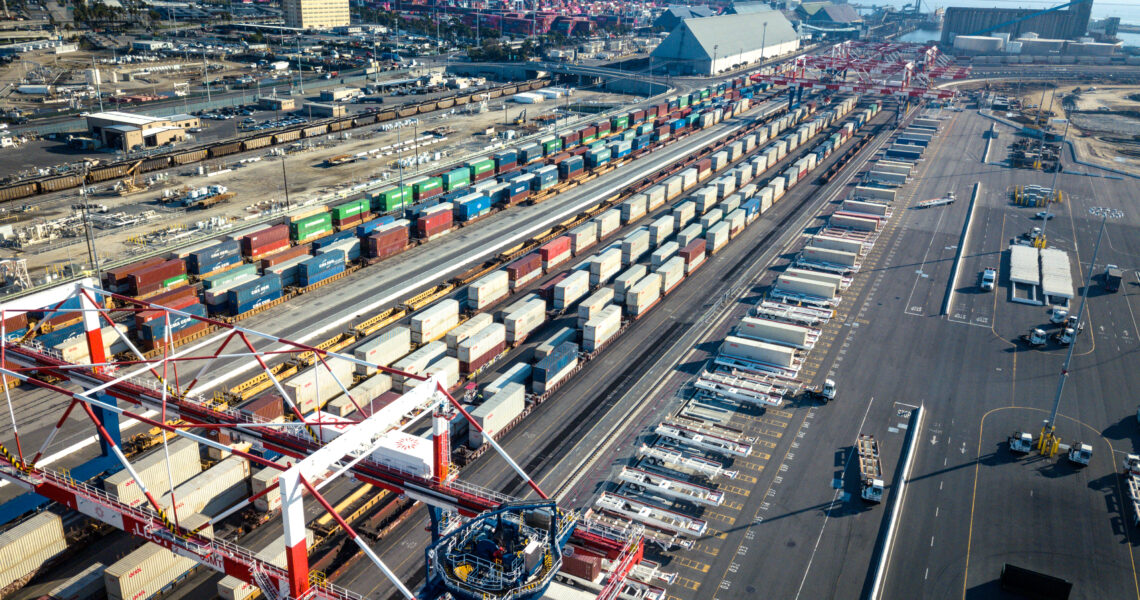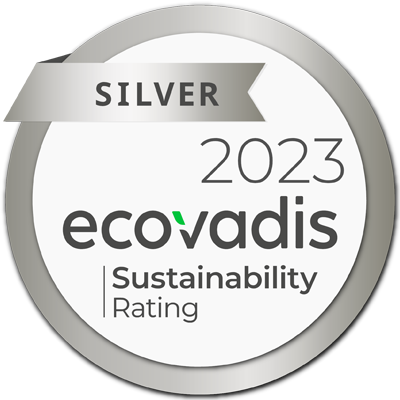- Project: LBCT Middle Harbour Redevelopment
- Location: Long Beach, California, USA
- Date: 2015 to present
- Application: STS, ASC and RMG
- Requirements: Full range of reeling cables for ERTG and STS.
- Tratos Product: Tratosflex-UL®
- Direct Client: ZPMC
- Final Client: LBCT
Tratos & ZPMC cooperation
With its Pier E officially inaugurated in 2016, the LBCT terminal inside of the Port of Long Beach USA, a project name “middle harbour redevelopment”, is a new “state-of-the-art” terminal, one the most advanced on its own in the U.S and all across the American continent.
Technologically advanced and environmentally sustainable, it will handle a capacity of 3,5 million TEU on completion. Planned project for 14 STS cranes, 70 Automatic Stacking Cranes (ASC) and 5 Intermodal RMGs. TRATOS started receiving orders from ZPMC to delivery its TRATOSFLEX under UL version for their Port of Long Beach mega project, back in 2015.
They delivered cables to be installed in all types of machinery, from Ship to Shore cranes, to Automatic Stacking Cranes or Rail Mounted Intermodal cranes. Some of the delivered UL approved cables for this project will run till these days on automated blocks with cranes moving at 210 mpm successfully.
Tratosflex ESDB, was specifically designed for high-speed reeling. Tratosflex features a unique internal cable design, with the structure tightened against the internal relative movement. This prevents the cable from twisting and leading to possible breakage – extremely dangerous when reeling at speeds up to 300m/m. As a result of this sophisticated, reliable design, ZPMC has teamed up with Tratos on Automation projects at Ports & Terminals involving ASC or E-RTG running at high speeds.
Did you know?
Long Beach Container Terminal (LBCT) is the first fully-automated container terminal in the US and the cleanest and most environmentally-friendly terminal in the world.
The terminal features a model zero-emission yard, replacing gear run by diesel with gear powered by electricity and low-emission fuels.
LBCT is completely remotely operated with electric gantry cranes and also features adjacent rail lines that will eliminate thousands of truck trips from the ports on through the warehouse network of the metropolitan area and region of Southern California and beyond.
Navis N4 serves as the brains of the automated operations at LBCT, controlling when the container is supposed to move, which piece of equipment is going to move it and where it’s going to be moved.
Tratos supports the sustainable development of port infrastructures
Tratos is very pleased to supply its high-quality cables to ports around the world. In doing so, Tratos supports the global endeavours of port authorities in upgrading and improving their operational capabilities, which contributes to the sustainable development of ports and achieving the 17 UN Global Goals.
With this project, Tratos has supported:
#Envision2030 Goal 3: Good Health and Well-being
- By 2030, substantially reduce the number of deaths and illnesses from hazardous chemicals and air, water and soil pollution and contamination
#Envision2030 Goal 8: Decent Work and Economic Growth
- Achieve higher levels of economic productivity through diversification, technological upgrading and innovation, including through a focus on high-value added and labour-intensive sectors
- Improve progressively, through 2030, global resource efficiency in consumption and production and endeavour to decouple economic growth from environmental degradation, in accordance with the 10-year framework of programmes on sustainable consumption and production, with developed countries taking the lead
#Envision2030 Goal 11: Sustainable Cities and Communities
- By 2030, significantly reduce the number of deaths and the number of people affected and substantially decrease the direct economic losses relative to global gross domestic product caused by disasters, including water-related disasters, with a focus on protecting the poor and people in vulnerable situations
#Envision2030 Goal 14: Life Below Water
Targets
- By 2025, prevent and significantly reduce marine pollution of all kinds, in particular from land-based activities, including marine debris and nutrient pollution
- Minimize and address the impacts of ocean acidification, including through enhanced scientific cooperation at all levels










